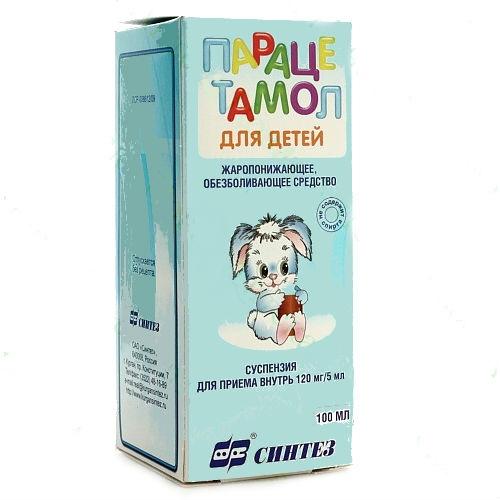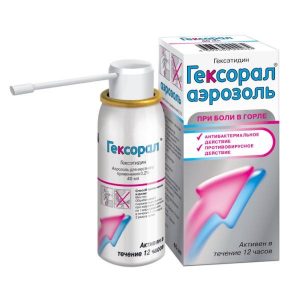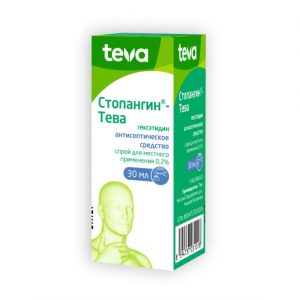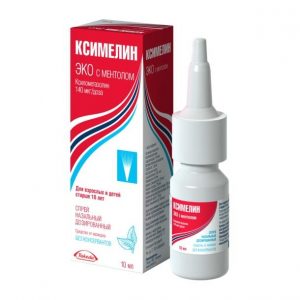Description
Release form
syrup 100ml.
Packaging
in bottles of 50, 100 ml, in a cardboard box 1 bottle.
Pharmacological action
Paracetamol – analgesic-antipyretic. It blocks the synthesis of prostaglandins in the central nervous system due to the inhibition of cyclooxygenase 1 and cyclooxygenase 2, affecting the centers of pain and thermoregulation. No anti-inflammatory effect. The absence of influence on the synthesis of prostaglandins in peripheral tissues leads to the absence of a negative effect on the water-salt metabolism (sodium and water retention) and the mucosa of the gastrointestinal tract.
Pharmacokinetics
Paracetamol is rapidly and almost completely absorbed from the gastrointestinal tract. It binds to plasma proteins by 15%. Paracetamol crosses the blood-brain barrier. Less than 1% of the dose of paracetamol taken by the nursing mother passes into breast milk. A therapeutically effective plasma concentration of paracetamol is achieved when administered at a dose of 10-15 mg / kg body weight. The half-life is 1-4 hours. Paracetamol is metabolized in the liver and excreted in the urine, mainly in the form of glucuronides and sulfonated conjugates, less than 5% is excreted unchanged in the urine.
Indications
Pain of mild to moderate intensity of various origins (including headache, migraine, toothache, neuralgia, myalgia, algomenorrhea pain from injuries, burns). Fever for infectious and inflammatory diseases.
Contraindications
Chronic alcoholism
hypersensitivity to paracetamol or any other ingredient of the
drug severe liver or kidney dysfunction
childhood (under 3 years)
Caution: use with caution in benign hyperbilirubin syndrome. viral hepatitis, alcoholic liver damage, glucose-6-phosphate dehydrogenase deficiency, alcoholism, pregnancy, lactation, in old age. The drug should not be taken simultaneously with other paracetamol-containing drugs.
Use during pregnancy and lactation
Paracetamol crosses the placental barrier. To date, there has been no adverse effect of paracetamol on the fetus in humans.
Paracetamol is excreted in breast milk: the content in milk is 0.04-0.23% of the dose taken by the mother.
If you need to use paracetamol during pregnancy and lactation (breastfeeding), you should carefully weigh the expected benefits of therapy for the mother and the potential risk to the fetus or child.
In experimental studies, the embryotoxic, teratogenic and mutagenic effects of paracetamol have not been established.
Special instructions
Before taking, consult your doctor if:
You have a serious liver or kidney disease
You are taking medications for nausea and vomiting (metoclopramide, domperidone), as well as drugs lowering blood cholesterol (cholestyramine)
You are taking anticoagulants and you need painkillers daily for a long time. In this case, paracetamol can be taken
occasionally. TO AVOID TOXIC HAZARD OF THE LIVER, PARACETAMOL SHOULD NOT BE COMBINED WITH THE USE OF ALCOHOLIC DRINKS, AND ALSO ACCEPTED TO PERSONS INCLINED WITH CHRONOLICOL.
During prolonged treatment, it is necessary to control the picture of peripheral blood and the functional state of the liver.
Composition
Active ingredient: paracetamol 24 mg
Excipients: sugar, sorbitol, citric acid, trisubstituted sodium citrate, propylene glycol, ethyl alcohol, riboflavin, aromatic additives, sodium benzoate, water
Dosage and administration of
For children aged 3 to 12 months, 2.5-5 ml syrup (60-120 mg paracetamol).
For children from 1 year to 5 years – 5-10 ml of syrup (120-240 mg of paracetamol).
For children aged 5 to 12 years – 10-20 ml of syrup (240-480 mg of paracetamol).
Adults and children weighing more than 60 kg – 20-40 ml of syrup (480-960 mg of paracetamol).
The frequency of taking paracetamol syrup is 3-4 times a day.
Side effects
Paracetamol rarely causes side effects. Allergic reactions (skin rash, itching, urticaria, Quincke edema), erythema multiforme exudative (including Stevens-Johnson syndrome), toxic epidermal necrolysis (Lyell’s syndrome), dizziness, nausea, epigastric pain, anemia, thrombocytopenia can sometimes be observed. agranulocytosis insomnia. With prolonged use in large doses – increases the likelihood of impaired liver and kidney function, as well as the hematopoietic system.
From the digestive system: nausea, epigastric pain, increased activity of liver enzymes, hepatonecrosis. From the endocrine system: hypoglycemia. If unusual symptoms occur, consult a doctor.
Drug interaction
The drug, when taken for a long time, enhances the effect of indirect anticoagulants (warfarin and other coumarins), which increases the risk of bleeding. Inducers of microsomal oxidation enzymes in the liver (barbiturates, diphenin, carbamazepine, rifampicin, zidovudine, phenytoin, ethanol, flumecinol, phenylbutazone and tricyclic antidepressants) increase the risk of hepatotoxic effects in case of overdose.
Prolonged use of barbiturates reduces the effectiveness of paracetamol.
Ethanol contributes to the development of acute pancreatitis.
Microsomal oxidation inhibitors (cimetidine) reduce the risk of hepatotoxicity. Joint use with other non-steroidal anti-inflammatory drugs increases the nephrotoxic effect.
Concomitant long-term administration of high doses of paracetamol and salicylates increases the risk of developing kidney and bladder cancer. Diflunisal increases the plasma concentration of paracetamol by 50% – the risk of hepatotoxicity.
Myelotoxic drugs increase the hematotoxicity of the drug. Metoclopramide and domperidone increase, and cholestyramine reduces the rate of absorption of paracetamol. The drug may decrease the activity of uricosuric drugs.
Overdose
Signs of an overdose of paracetamol – nausea, vomiting, stomach pain, paleness of the skin, anorexia. After a day or two, signs of liver damage are determined. In severe cases, liver failure and coma develops. A specific antidote for paracetamol poisoning is N-acetylcysteine.
Symptoms: pallor of the skin, anorexia, nausea, vomiting, hepatonecrosis (the severity of necrosis directly depends on the degree of overdose). If overdose is suspected, seek medical attention immediately. The toxic effect of the drug in adults is possible after taking more than 10-15 g of paracetamol: increased activity of hepatic transaminases, an increase in prothrombin time (12-48 h after admission) a detailed clinical picture of liver damage manifests itself in 1-6 days. Rarely, impaired liver function develops rapidly and may be complicated by renal failure (tubular necrosis).
Treatment: the patient should do gastric lavage within the first 4 hours of poisoning, take adsorbents (activated charcoal) and see a doctor, the introduction of donors of SH-groups and precursors of synthesis of glutathione – methionine in 8-9 h after overdose and N-acetylcysteine – after 12 hours The need for additional therapeutic measures (further administration of methionine, in / in the introduction of N-acetylcysteine) is determined depending on the concentration of paracetamol in the blood, as well as the time elapsed after its rhyme.
shelf life
3 years
Deystvuyushtee substance
Paracetamol
Conditions of drugstore
Without prescription
Prescribing
Prescribing
For children over 1 month old, For children prescribed by a doctor
Synthesis AKOMP, Russia




